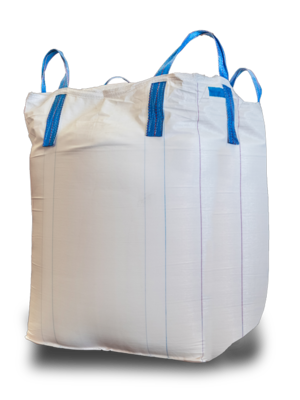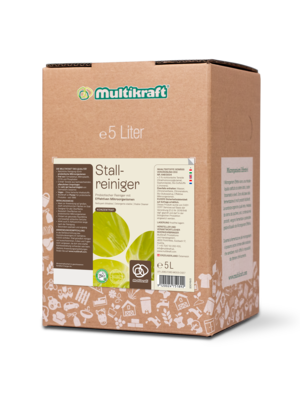

Slurry processing and barn cleaning
Slurry has two key benefits.
It contains a variety of essential nutrients for plants and, at the same time, it provides organic substances that ensure an active soil life and good soil fertility in the long term. It increases the humus content of the soil. This allows plants to absorb important nutrients and water more easily and also reduces the need for mineral fertilisers.
When the feed supplement that we have developed (Fermented Herb Extract or FHE) is fed to the animals, it helps to ensure that the slurry is more free-flowing and has a reduced odour.
Usefully, the slurry can either be treated directly with FHE or MK Soil (soil additive), or indirectly by adding the products regularly to the animals’ feed.



What effects does slurry processing have on soil quality?
The agricultural fertilisers produced in livestock rearing, such as slurry and manure, are high-quality natural materials in the agricultural circular economy. Because of the high price of mineral fertilisers over recent years, slurry and manure have become more valuable to farmers. This makes it all the more important to ensure that they are of high quality.
What effects does slurry processing have on emissions and the quality of forage?
By managing and processing the fertiliser correctly using FHE and charcoal or rock dust, you can avoid the reduction in quality caused by rotting and emissions of ammonia and nitrous oxide. By applying only 1 litre of FHE per cubic metre of solid manure, you can reduce ammonia emissions by more than 40 per cent. This means that up to 1.1 kg of nitrogen is retained in each tonne of fertiliser and is not emitted into the atmosphere.
If rotting develops in the slurry or manure, together with the accompanying microbiology, hydrogen sulphide, hydrogen peroxide and other metabolites will be produced, which inhibit the soil life. In addition, bacteria such as Clostridium and other pathogens will spread to surfaces and could have a negative effect on the quality of the forage or arable crops.
The probiotic microorganisms in FHE suppress rotting and significantly reduce fertiliser loss, emissions and odours. This creates the ideal conditions for a high-quality agricultural fertiliser in a simple and natural way, and supports soil life and plant growth.
The agricultural fertilisers produced in livestock rearing, such as slurry and manure, are high-quality natural materials in the agricultural circular economy. Because of the high price of mineral fertilisers over recent years, slurry and manure have become more valuable to farmers. This makes it all the more important to ensure that they are of high quality.
What effects does slurry processing have on emissions and the quality of forage?
By managing and processing the fertiliser correctly using FHE and charcoal or rock dust, you can avoid the reduction in quality caused by rotting and emissions of ammonia and nitrous oxide. By applying only 1 litre of FHE per cubic metre of solid manure, you can reduce ammonia emissions by more than 40 per cent. This means that up to 1.1 kg of nitrogen is retained in each tonne of fertiliser and is not emitted into the atmosphere.
If rotting develops in the slurry or manure, together with the accompanying microbiology, hydrogen sulphide, hydrogen peroxide and other metabolites will be produced, which inhibit the soil life. In addition, bacteria such as Clostridium and other pathogens will spread to surfaces and could have a negative effect on the quality of the forage or arable crops.
The probiotic microorganisms in FHE suppress rotting and significantly reduce fertiliser loss, emissions and odours. This creates the ideal conditions for a high-quality agricultural fertiliser in a simple and natural way, and supports soil life and plant growth.
Reducing ammonia from pig fattening

The use of MK Soil and the FHE (Fermented Herb Extract) feed supplement for fattening pigs reduces the climate gases methane, ammonia and nitrous oxide by 35 per cent on average in pig pens with sloping floors. At the same time, Multikraft technology minimises total organic carbon (TOC) emissions by an impressive 78 per cent.
Reducing ammonia from poultry keeping

Multikraft FHE (Fermented Herb Extract) reduces the ammonia emissions from poultry keeping by up to 42.9 per cent and improves feed conversion.
Practical applications - achieving sustainable success with Multikraft
FKE (fermented herb extract)
Customer: Pircher Peter farm, 8225 Pöllau, Austria
Problem: Slurry channel in the entire barn (for 50 dairy cows) full up to the bottom edge of the slatted floor with manure/slurry. No more drainage possible.
Application: 300 litres of FKE were distributed in the entire barn with a watering can. Sprinklers were also installed. After 2 weeks, holes were made in the manure/slurry cover and another 300 litres of FKE was poured on. After a week, the slurry slowly began to drain due to the irrigation.
Result (after 4 weeks):
- Slurry channel almost empty
- Barrages are working again
- Perfectly prepared slurry in the slurry pit







